In general, curtains and curtains are an often overlooked, yet essential part of a room. In addition to the practical function of shading, they can also be used as the final decorative layer to a space – they are a great way to add color and pop patterns. There are countless different types of curtains on the market, and they come in different styles, lengths, and materials, with some working best for one room in your home over another. Use the comprehensive guide below to choose the right type of curtain for your home.
01. Blackout Curtains
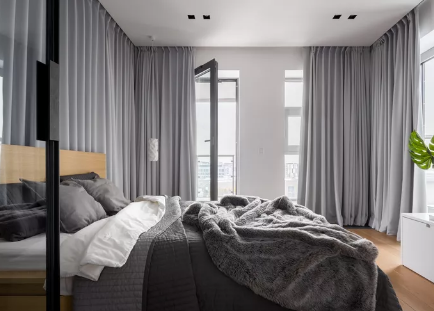
Best for: Bedrooms
Blackout curtains completely block out the light and allow for complete darkness to promote a good night’s sleep. They have a thick woven lining that doesn’t allow any light to pass through. In addition to regulating the light, blackout curtains also help regulate the temperature, keeping out the wind in winter and heat in summer.
02. Curtains with Ties
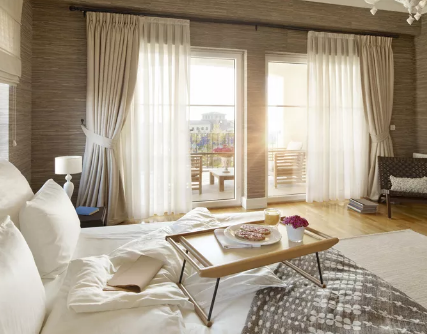
Best for: Bedroom and living room
Curtain ties are a decorative and practical addition to the window panels. They are usually equipped with curtains and are made of the same material – you will also see that they are made of braided rope and decorated with tassels, or made of complementary fabrics or patterns. They are held in place by two rings at both ends in hooks on the wall.
03. Pleated Panel Curtains
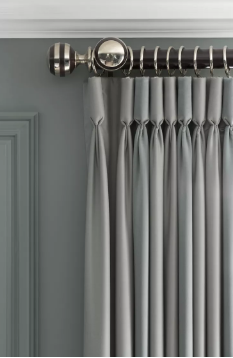
Best for: Formal living spaces and bedrooms
If you want to add an elegant and slightly sophisticated look to your windows, pleated panel curtains are a great choice. The pleats are made up of multiple fabrics folded and stacked on top of each other to create a sense of fullness, and they hang gently in an even manner, creating a timeless yet sophisticated feel.
04. Single-Panel Curtains
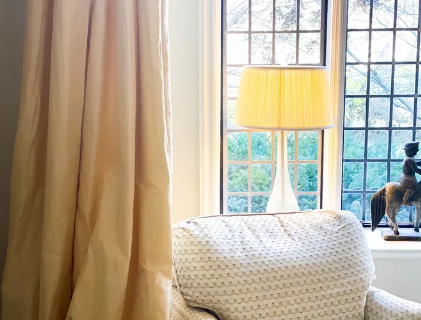
Best for: Small windows, modern look
Smaller windows may only require one curtain panel instead of two. It is usually made of a continuous piece of fabric, and you can always buy two panels for either side of the window, or even on both sides for larger windows or sliding doors.
05. Double-Panel Curtains
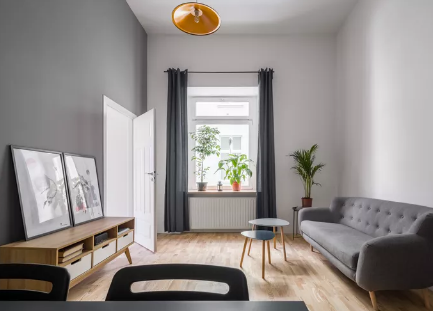
Best for: bay windows, French doors and sliding doors
As the name suggests, double curtain panels consist of two veneers on either side of the window. When buying a curtain, be sure to read the product description carefully to see if it includes one or two panels.
06. Pinch Pleated Curtains
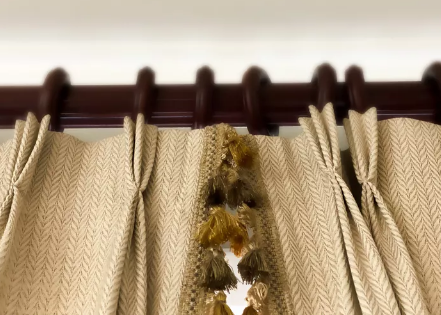
Best for: Formal living spaces and bedrooms
If you’re looking for curtains with a little extra detail, pinch-pleated curtains will add a decorative touch to your windows. The classic pinch-pleated is made from three tight fabric folds that form a scalloped detail at the top of the curtain panel, with the pleats gently fanning out towards the ground.
07. Grommet Curtains
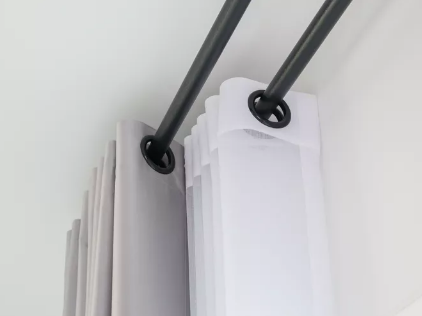
Best for: Windows that open and close their curtains frequently
Since the grommet curtain slides well along the bar, it can be opened and closed easily and quickly. These panels have a circular metal ring built into the top, eliminating the need for curtain rings as the rod slides directly through the holes in the fabric. These curtains create a clean, modern, and uncluttered look that is perfect for streamlined, modern, and transitional spaces.
08. Cafe Curtains
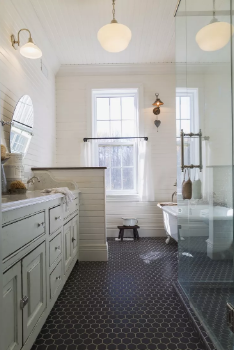
Best for: Kitchen and bathroom
Café curtains differ from other types of curtains in that they only cover the bottom of the window, thus allowing light to pass through the top while still providing privacy. They can be easily installed using small tie rods instead of permanent rods and are most commonly used in spaces such as kitchens and bathrooms.
09. Label Top Curtains
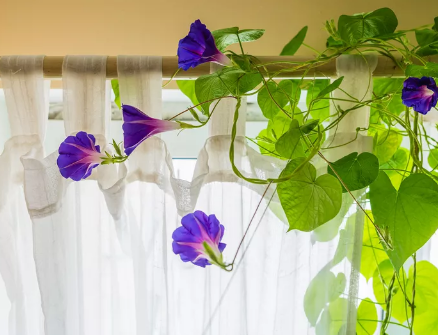
Best for: Informal spaces
The top of the top pull ring curtain is designed with a ring that is made of the same fabric as the panel and hangs directly from the curtain rod. As with grommets and bar bag curtains, they don’t require curtain rings, and sometimes they are not sewn loops either, but sewn lacing that adds an extra decorative feature to them.
10. Floor-to-Ceiling Curtains
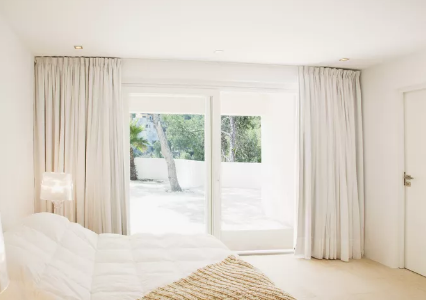
Best for: living spaces, bedrooms
To visually extend the height of the ceiling and make the room feel larger, use floor-length curtains. People tend to hang curtains too low, which can make the ceiling appear low and heavy, so the general rule of thumb is to hang the curtains two-thirds between the window and the ceiling, closer to the ceiling.
11. Apron Length Curtains
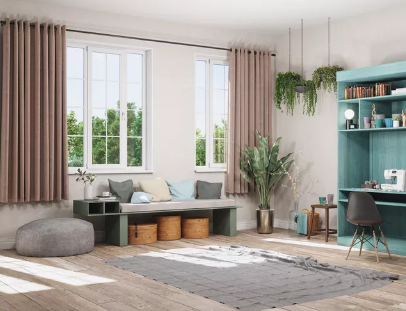
Best for: Kitchens, bathrooms and rooms with obstructed space under windows
The apron-length curtain falls just below the windowsill. They’re not usually as popular as they’ve been in decades past, but they’re a great option for spaces with furniture or heaters right below the windows.
12. Puddle Length Curtains
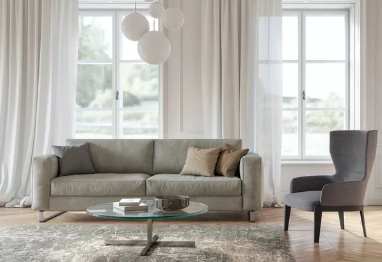
Best for: Living spaces and bedrooms
A puddle refers to the length of the curtain panel – a puddle-length curtain is not just touching the ground or having an inch break, but a literal “puddle” on the ground, creating a dramatic and soft look. The only disadvantage of such curtains is that they can accumulate a lot of dust, resulting in the need for more frequent cleaning.
13. Filter Curtains
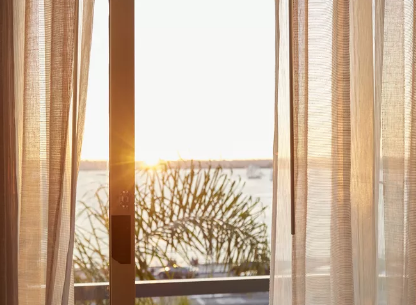
Best for: Rooms that don’t require complete darkness
Filter curtains aren’t as completely transparent as transparent curtains, but they allow more light to enter than curtains that darken or darken a room. They offer a bit of privacy and block out direct sunlight while allowing plenty of light to enter. They are made from thinner, looser-textured, lightweight fabrics, usually cotton or polyester.
14. Window Scarves Curtains
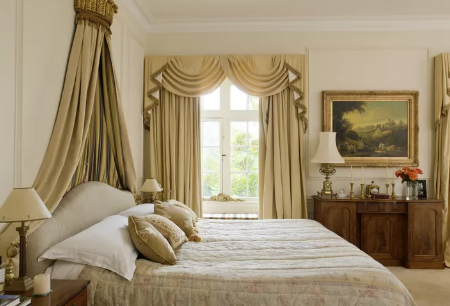
Best for: Traditional style and formal rooms
You will see scarves and curtains mainly in traditional-style rooms, the fabrics of which are often coordinated or matched to the upholstery of the room. These curtains are usually made of three parts: two curtain panels and a decorative curtain at the top, which hangs over the curtain panels like a scarf.
Select the Curtains
To choose the right type of curtain for your home, look at the list of questions to narrow down your options. First, consider which room they will hang in; for example, the type of curtain you choose for your bedroom will be very different from the type of curtain you choose for your kitchen window. Then, decide how much light you want them to filter, whether you’re going to sleep in a room and need to block out all light like blackout curtains, or if you want them to diffuse sunlight softly like filtered curtains. Keep your home’s style in mind, help them blend in, measure carefully, and hang your curtains like a designer by following this hanging guide.

